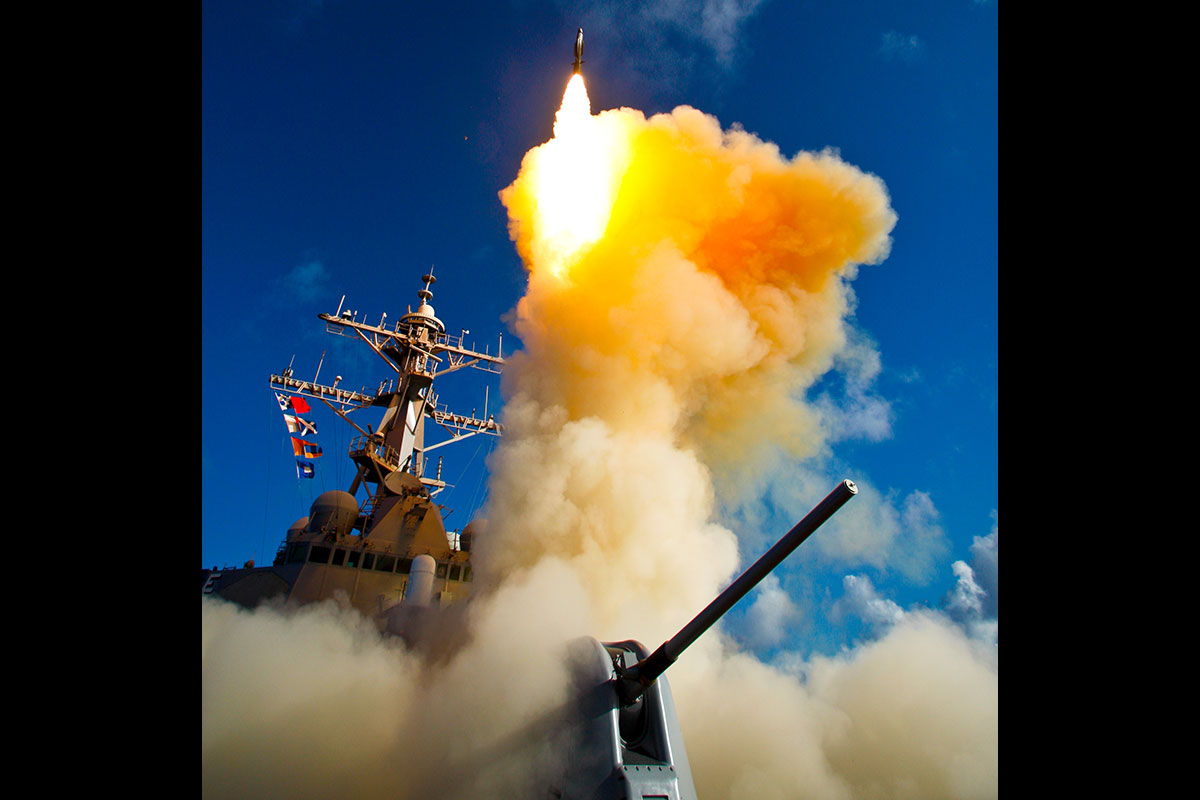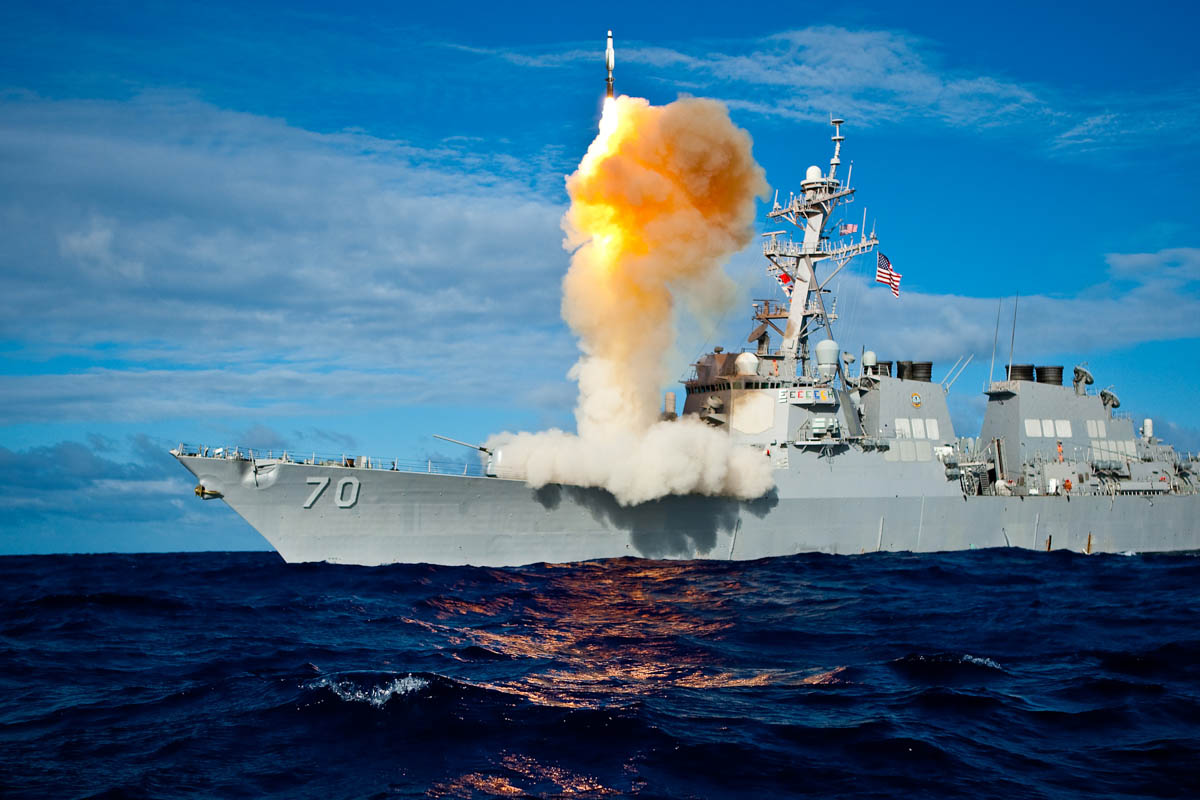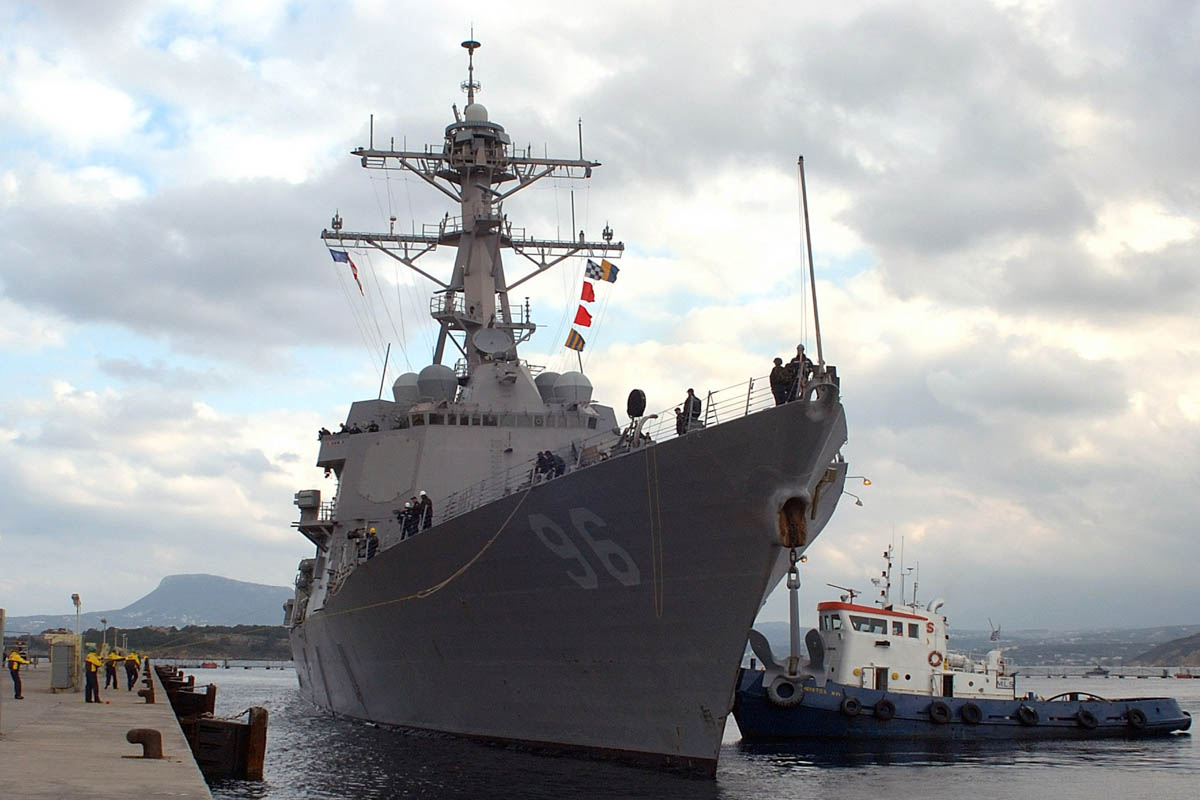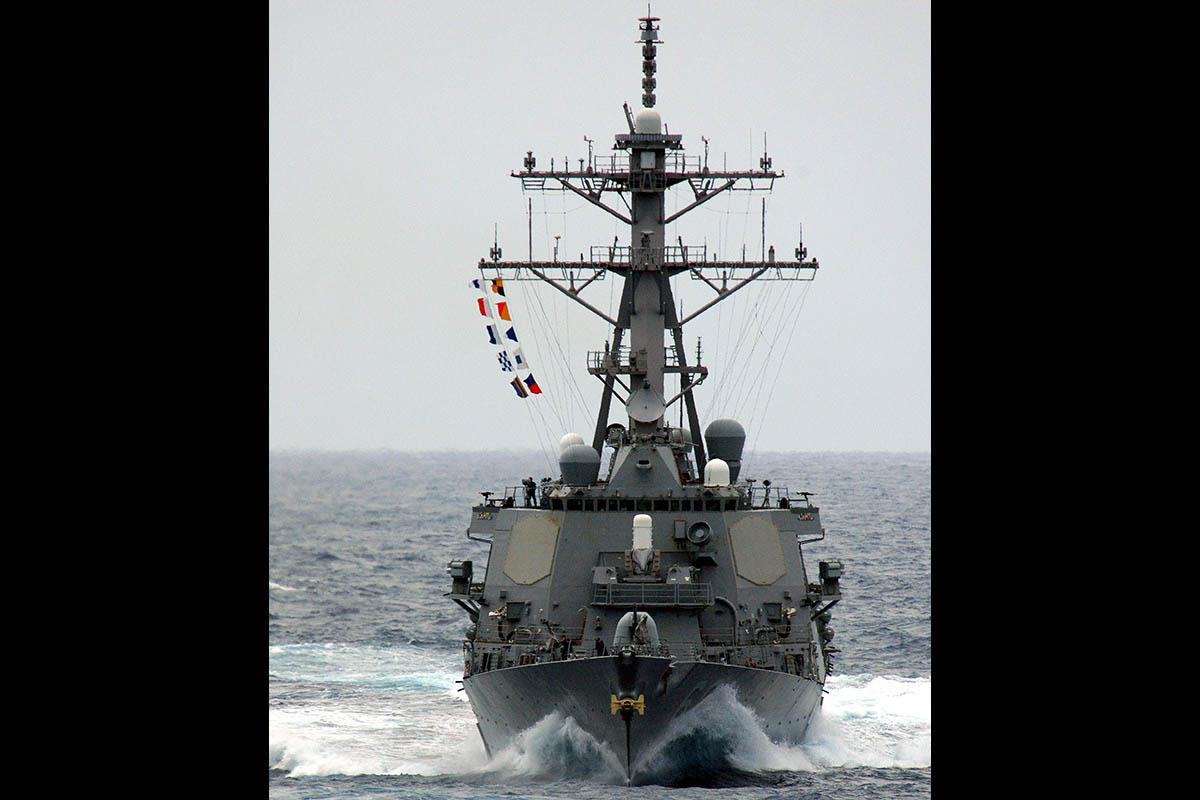The Aegis Weapon System is a centralized, automated, command-and-control and weapons control system that was designed as a total weapon system, from detection to kill. The heart of the system is the AN/SPY-1, an advanced, automatic detect and track, multi-function phased-array radar. This high-powered (four megawatt) radar is able to perform search, track, and missile guidance functions simultaneously, with a track capacity of more than 100 targets. The first Engineering Development Model (EDM-1) was installed in the test ship, USS Norton Sound (AVM 1) in 1973.
The computer-based command and decision element is the core of the Aegis combat system. This interface makes the Aegis combat system capable of simultaneous operations against multi-mission threats: anti-air, anti-surface and anti-submarine warfare. The first Aegis ship, USS Ticonderoga (CG 47), was commissioned in 1983 and deployed six months after commissioning.
The Navy built the first Aegis cruisers using the hull and machinery designs of Spruance class destroyers. The commissioning of USS Bunker Hill (CG 52) opened a new era in surface warfare as the first Aegis ship outfitted with the Vertical Launching System (VLS), allowing greater missile selection, firepower and survivability. The improved AN/SPY-1B radar went to sea in USS Princeton (CG 59), ushering in another advance in Aegis capabilities. USS Chosin (CG 65) was the first ship installed with the AN/UYK-43 computers, which provide increased processing capacity.
A smaller ship was designed using an improved sea-keeping hull form, reduced infrared and radar cross section and upgrades to the Aegis Combat System. The first ship of the DDG 51 class, USS Arleigh Burke, was commissioned on the Fourth of July, 1991. The DDG 51 class was named after the legendary Admiral Arleigh Burke, the most famous destroyerman of World War II.
DDG 51s are constructed in flights, allowing technological advances during construction. The first 21 destroyers (DDG 51 through DDG 71) were identified as Flight I DDGs. Flight II, introduced in fiscal year 1992 (FY 92), incorporated improvements to the SPY radar, active electronic countermeasures and communications. Flight IIA, introduced in FY 94, consisted of DDG 79 and follow-on destroyers, which added a helicopter hangar with space for two multi-mission helicopters. AN/SPY-1D(V) introduced improvements in littoral environments, starting with USS Pinckney (DDG 91).
The Navy has decided to restart construction of new DDG 51s. The new Aegis destroyer will utilize software componentized to enable reuse and networked-based COTS computing system infrastructures during installation, modifications, and future upgrades. The restarted Aegis destroyers (DDG Restart) will incorporate the same new technologies, as an Aegis Modernized Destroyer such as the Multi- Mission Signal Processor (MMSP), the Surface Electronic Warfare Improvement Program (SEWIP), Ballistic Missile Defense (BMD) 5.0, and the AN/SQQ-89(V) Anti-Submarine Warfare/Undersea Warfare Combat System (ASWCS/USWCS). In addition to this DDG restart effort, the Navy is currently making plans for a follow-on version of the DDG 51 class that will be called DDG Flight III.
There are currently 74 U.S. Navy ships in service with the Aegis Weapons System installed: 22 Cruisers and 52 Destroyers.













